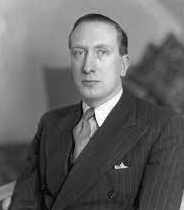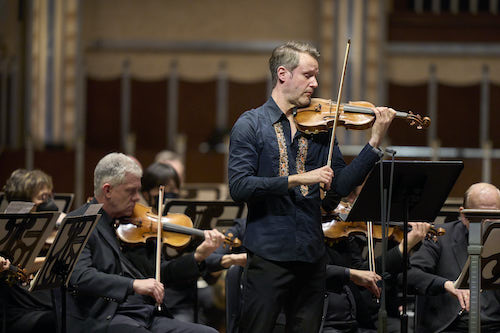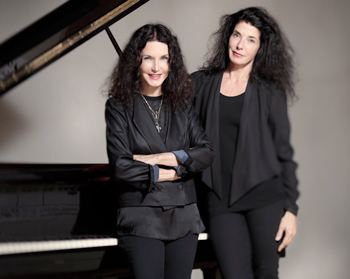by Daniel Hathaway
First opportunities to hear two repeating programs:
The Cleveland Orchestra welcomes guest conductor Semyon Bychkov for Martinů’s Concerto for Two Pianos with Katia and Marielle Labèque (pictured), Julian Anderson’s Symphony No. 2 (“Prague Panoramas”), and Tchaikovsky’s Romeo and Juliet Fantasy Overture (7:30 at Severance Music Center, repeated on Saturday at 8).
And City Music presents “Christmas, Beethoven, and Mambo” with guest conductor Stefan Willich and Cleveland Orchestra French hornist Hans Clebsch (7:30 at Fairmount Presbyterian, repeated at the same hour on Friday at Lakewood Congregational Church and Saturday at the Shrine of St. Stanislaus, and Sunday at 4:00 at St. Noel Catholic Church).
Visit our Concert Listings for details of these and other performances,
NEWS BRIEFS:
Baldwin Wallace reports that the university has claimed two national awards for opera productions this month, the latest on Monday night in New York. “The national recognition includes kudos for a virtual opera festival featuring new Micro Operas performed by BW voice students, as well as applause for the spring production of We’ve Got Our Eye On You.” Read the article here.
TODAY’S ALMANAC:
By Jarrett Hoffman

That only came about after several earlier plans were discarded: a performance at the 1939 New York World’s Fair (Heifetz couldn’t make the date work), then an opportunity for Walton to conduct it with the Boston Symphony (the start of World War II prevented him from traveling to the U.S. from his native England). And for that same reason, he couldn’t attend the eventual premiere in Cleveland.
There are also some odd and interesting facts and quotes surrounding the work. First, its commissioning seems to have prevented Walton (pictured above) from writing a violin-and-clarinet piece for Joseph Szigeti and Benny Goodman. Second, a tarantula bite inspired him to incorporate into the second movement a tarantella, a passage he described as “quite gaga…and of doubtful propriety.”
Here’s another great quote from Walton at the time he was composing the piece. And like any evil journalist, I’ll pull the juiciest part first: “I seriously advise all sensitive composers to die at the age of 37.” The context is that he could feel that trends in classical music were turning on him. “These days it is very sad for a composer to grow old — unless, that is, he grows old enough to witness a revival of his work…I’ve gone through the first halcyon periods, and am just about ripe for my critical damnation.”
When it comes to the Concerto at least, it turns out that he was partly wrong, partly right. In some corners it was praised, in others it was considered an inferior follow-up to his Viola Concerto, though critics mostly came around by the ‘90s and early 2000s. These days, it’s considered a key cog in Walton’s legacy. Too bad he didn’t live to find out — he died in ‘83.

“Unlike many concertos, which have long orchestral openings, this one introduces the soloist at the very beginning. ‘Here you just dive right in and present the main theme starting in measure two,’ Otto said. ‘That’s something I really like — and to boot, it’s one of the most beautiful melodies ever written for the violin.’”
This date in 1960 also recorded the death of mezzo-soprano Lila Robeson in Euclid, Ohio — the first Cleveland-born musician to sing with the Met Opera. She was a graduate of Central High School (the first public high school in Cleveland) and what was then known as Western Reserve University. And as CWRU’s excellent Encyclopedia of Cleveland History states, “She possessed the phenomenal ability to step onstage at a moment’s notice and sing any of 60 operatic parts without rehearsal.”
After singing with the Met from 1912-22, Robeson returned to the area, taught voice, and was featured in The Cleveland Opera Co.’s 1923 production of Verdi’s Il Trovatore. She’s buried in Lake View Cemetery.



